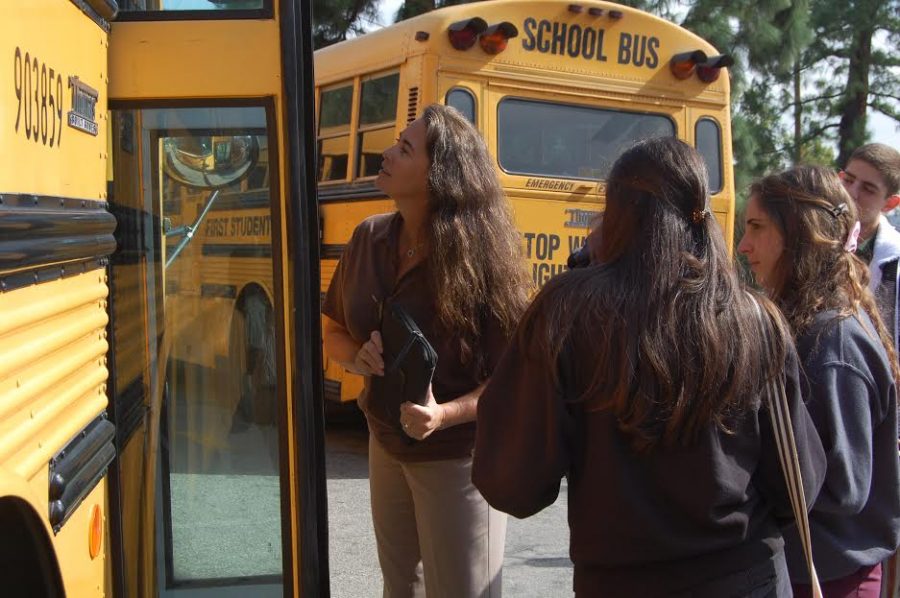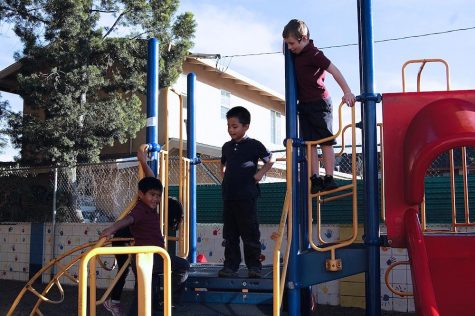Students notice smaller buses
Photo taken by Susan Krkasharian
The District has requested a new fleet of buses from its bus company, First Student. The new buses will be equipped with air conditioning and seat belts.
Recently, students have noticed smaller buses picking them up from their bus stops and taking them home from school. Many have speculated that the GUSD will be using these smaller buses regularly; however, this is not the case.
The smaller buses that students have noticed are known as conventional buses or vans. They are used as replacements if students’ regular buses break down or are being used on other trips. Junior Prenny Zadoorian said she is not a fan of these smaller modes of transportation. “They are extremely small and there is never enough space inside,” she said. “Some people even have to sit three to a seat.” Zadoorian also said she was upset with how noisy the smaller buses are and said she dislikes the fact that they come equipped with seatbelts, because they are uncomfortable.
Although the smaller buses will be used when necessary, the District has requested a new fleet of buses from its bus company, First Student. A representative from the company said that the request was made because every five years, First Student customers must renew their contract with GUSD. This gives the District the ability to request new buses at the time of contract renewal for an additional fee. The new buses will seat the same number of students, but they will be equipped with air conditioning and seat belts. The seatbelts are required on all new buses, due to California Vehicle Code 27316. Bus schedules will not be affected by the change, although additional routes may be added in the future.
Although the new buses were originally expected to arrive in November 2014, their delivery was postponed, and according to a First Student spokesperson, they are now expected to arrive this month. Senior Administrative Secretary Susan Lockhart said that the delay may be attributed to the fact that the buses are being sold by a vendor on the East Coast; they must be driven to California, registered, licensed, checked for smog and labeled properly, she said.













